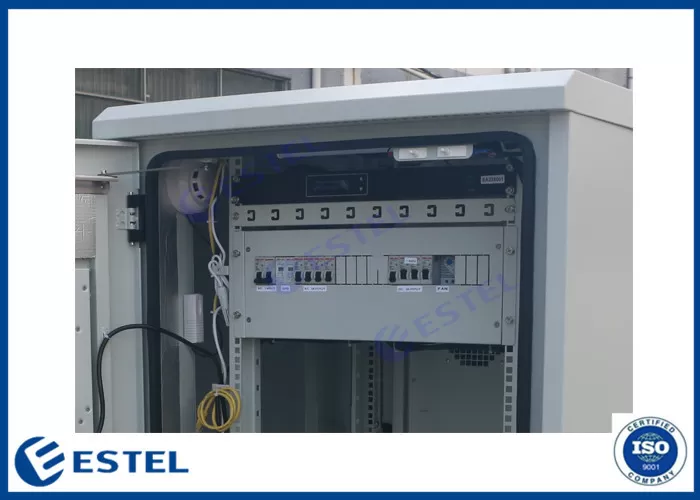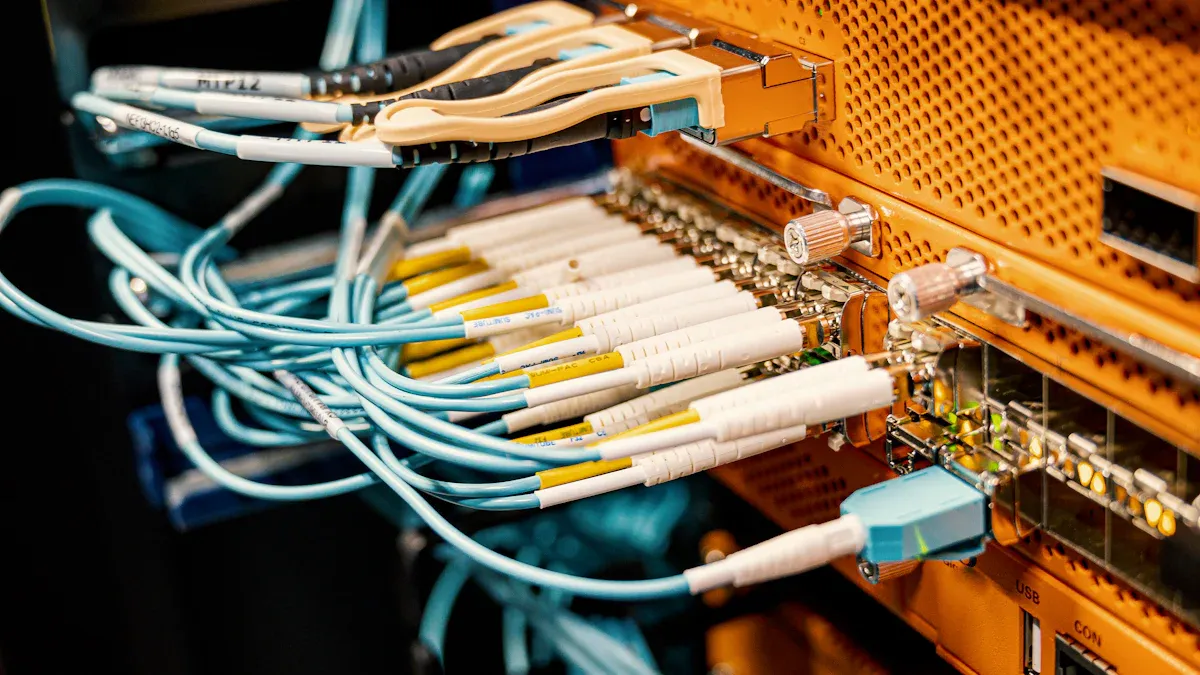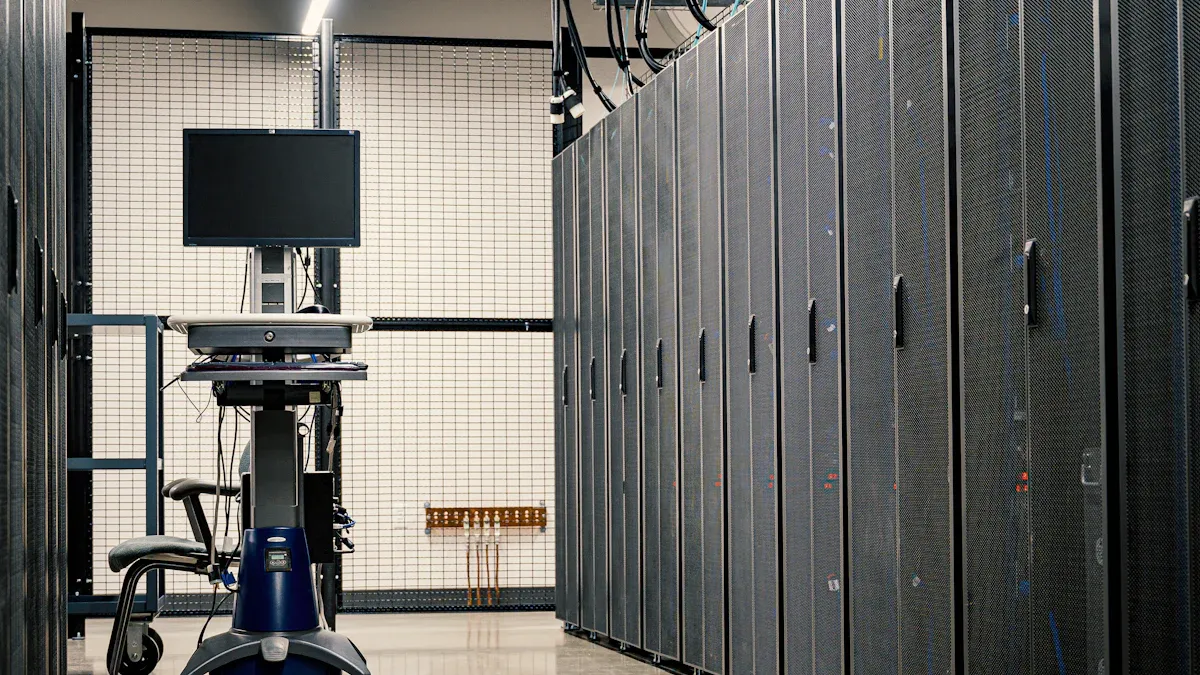What Are the Main Types of ESTEL Telecom Cabinet Sensors and Their Uses

ESTEL offers a range of telecom cabinet sensor solutions designed to protect telecom cabinets from environmental risks. Key sensors include temperature sensors, humidity sensors, air quality sensors, current sensors, proximity sensors, and security sensors. Effective monitoring with these sensors ensures telecom cabinets remain safe and operational. Environmental monitoring helps identify threats early, allowing technicians to take action before problems escalate. Regular monitoring of these cabinets reduces the risk of costly downtime and equipment failure.
Key Takeaways
ESTEL offers various sensors that monitor temperature, humidity, air quality, electrical current, proximity, and security to protect telecom cabinets.
These sensors detect problems early, helping technicians fix issues before they cause equipment damage or downtime.
Combining multiple sensors into one device simplifies monitoring and gives a complete view of cabinet conditions.
IoT-enabled and remote monitoring systems allow real-time alerts and quick responses, improving reliability and reducing manual checks.
Using these sensors helps protect equipment, improve operational efficiency, and strengthen security to keep telecom cabinets safe and running smoothly.
Telecom Cabinet Sensor Types

Temperature Sensors
Temperature sensors play a critical role in telecom cabinet sensor systems. These sensors continuously monitor internal temperatures, ensuring that equipment operates within safe limits. Overheating can cause immediate equipment failure or long-term degradation. By placing temperature sensors near hot zones and cooling units, technicians can detect abnormal rises in temperature early. For example, if a cooling fan fails, the sensor triggers an alert, allowing rapid intervention before damage occurs.
Recommended temperature ranges for telecom cabinets fall between 64°F and 80°F (18°C to 27°C). High-precision sensors, such as the Vaisala Temperature/Humidity Sensor, offer accuracy within ±0.54°F (±0.3°C), providing reliable data for real-time monitoring solutions.
Wireless sensor networks using ZigBee technology have proven effective in monitoring temperature and energy parameters. These networks support advanced analytics, enabling timely fault detection and isolation. This approach minimizes downtime and extends equipment life.
Humidity Sensors
Humidity sensors help maintain optimal moisture levels inside cabinets. Excess humidity can lead to corrosion, while low humidity increases the risk of static discharge. Both conditions threaten sensitive telecom equipment. By monitoring humidity, these sensors enable proactive adjustments to HVAC systems or dehumidifiers.
Humidity sensors, such as those from Monnit ALTA® and CPI, deliver ±3% accuracy and instant alerts. This precision ensures that technicians can respond quickly to environmental changes, reducing the risk of equipment failure and preventing downtime.
Air Quality Sensors
Air quality sensors detect airborne contaminants, dust, and particulate matter that may enter telecom cabinets. Poor air quality can clog filters, reduce airflow, and cause overheating. These sensors form part of a comprehensive monitoring solution, alerting operators to the presence of harmful particles.
In environments with high pollution or construction activity, air quality sensors provide early warnings. This allows for timely filter replacement or cabinet sealing, protecting internal components and maintaining optimal performance.
Current Sensors
Current sensors monitor electrical flow to and from telecom equipment. Abnormal current levels may indicate short circuits, overloaded circuits, or failing power supplies. By integrating current sensors, operators can identify electrical faults before they escalate.
For example, a sudden spike in current could signal a failing power supply. The sensor triggers an alert, prompting immediate inspection and repair. This proactive approach prevents equipment damage and supports continuous operation.
Proximity Sensors
Proximity sensors detect the presence or absence of objects or personnel near telecom cabinets. These sensors enhance security by monitoring access points and triggering alerts if unauthorized movement occurs.
In remote or unmanned sites, proximity sensors serve as a first line of defense against intrusion. When combined with contact closure sensors, they provide layered security, ensuring only authorized personnel access sensitive equipment.
Security Sensors
Security sensors include contact closure sensors, vibration sensors, and intrusion detection devices. Contact closure sensors monitor door and panel status, while vibration sensors detect tampering or forced entry. Intrusion detection systems combine these inputs to provide comprehensive protection.
Security sensors play a vital role in preventing unauthorized access and theft. When a cabinet door opens unexpectedly, the system sends an immediate alert to security personnel. This rapid response capability reduces the risk of data breaches and equipment loss.
Multisensors
Multisensors integrate several sensing technologies—such as temperature, humidity, pressure differential sensors, and water leak sensors—into a single device. This approach simplifies installation and provides a holistic view of cabinet conditions.
Multisensors support advanced monitoring solutions by collecting diverse data streams. For example, a multisensor can simultaneously track temperature, humidity, and water detection, enabling rapid identification of multiple threats. This integration improves fault detection rates and supports energy management protocols.
Case studies show that integrated sensor systems, when combined with robust cabinet design, maintain stable environmental conditions even in harsh settings. These systems enable continuous, reliable data collection and minimize the need for human intervention.
ESTEL’s telecom cabinet sensor portfolio leverages these technologies to deliver comprehensive environmental monitoring. By combining temperature sensors, humidity sensors, airflow sensors, pressure differential sensors, and contact closure sensors, ESTEL provides a monitoring solution that addresses every critical risk. This integration supports preventing downtime, enhances equipment protection, and ensures telecom cabinets remain secure and operational.
Environmental Monitoring in Telecom Cabinets

Data Center Environmental Sensors
Data center environmental sensors form the backbone of modern telecom cabinet monitoring. These sensors track temperature, humidity, airflow, and power distribution. Operators use them to maintain optimal conditions for sensitive equipment. Sensors placed in racks and under floors detect hotspots and ensure cooling systems work efficiently. Monitoring power distribution and phase load helps maintain power efficiency and supports service level agreement compliance.
Sensors provide continuous data for proactive maintenance and capacity planning.
Real-time environmental data allows technicians to address issues before they escalate.
Visualization tools, such as 2D and 3D heatmaps, offer instant insights into temperature and airflow patterns.
Data center management teams rely on these sensors to align with industry standards and reduce CO2 emissions. Efficient cooling, supported by accurate sensor data, lowers operational costs and supports sustainability goals.
IoT-Enabled Monitoring
IoT-enabled monitoring transforms telecom cabinet management. These systems connect sensors to centralized platforms, enabling remote monitoring and control. Operators receive real-time alerts when sensors detect abnormal conditions. Remote monitoring allows teams to respond quickly, even from offsite locations.
Analog sensors integrated with remote terminal units (RTUs) provide real-time environmental data.
Ping alarms on RTUs monitor network gear status, alerting staff before failures impact service.
IoT platforms support visualization, reporting, and automated responses.
This proactive monitoring solution improves reliability and streamlines data center management. Teams can plan maintenance based on sensor data, reducing manual inspections and improving efficiency.
Reducing Downtime
Environmental monitoring plays a vital role in reducing downtime. Predictive maintenance strategies use sensor data and historical records to identify risks early. Statistical data from telecom operations shows that these strategies have reduced network downtime by 25%. AI-driven predictive maintenance can further reduce downtime by up to 35% by detecting anomalies before they escalate.
Proactive monitoring and real-time alerts help teams prevent outages and maintain high reliability.
Integration of sensors with data center management systems enhances visibility and response times. Operators can address issues before they affect service, ensuring continuous operation and improved reliability.
Benefits for Telecom Cabinets
Equipment Protection
Telecom cabinets face constant threats from environmental changes and unauthorized access. ESTEL sensors deliver continuous monitoring, which helps protect sensitive equipment from overheating, moisture, and dust. Operators receive real-time alerts when sensors detect abnormal conditions, allowing for immediate action.
IoT sensors track temperature and humidity, identifying risks like overheating or moisture buildup before damage occurs.
Sensors spot early signs of wear, enabling prompt maintenance and preventing costly repairs.
Remote monitoring systems reduce the need for frequent on-site inspections, saving time and resources.
Real-time alerts support swift responses to potential failures, minimizing downtime.
Improved cooling efficiency and reduced maintenance efforts result from integrating sensors and remote monitoring.
These features ensure long-term reliability and uptime for telecom equipment, extending equipment life and reducing the risk of unexpected failures.
Operational Efficiency
Modern telecom operations demand high efficiency. ESTEL sensors support this goal by providing real-time monitoring and data-driven insights.
IoT-enabled enclosures use sensors to monitor performance and energy usage.
AI analytics process sensor data, predicting maintenance needs and detecting faults early.
Predictive maintenance reduces disruptions and improves system reliability.
Temperature monitoring systems enable active cooling, optimizing performance and reducing energy costs.
Combining passive and active cooling, guided by sensor data, keeps cabinets in peak condition.
Operators benefit from proactive monitoring, which streamlines maintenance and supports sustainability goals.
Security Enhancement
Security remains a top priority for telecom infrastructure. ESTEL sensors strengthen cabinet security by detecting intrusion and unauthorized access.
Proximity and contact sensors monitor access points, alerting operators to intrusion attempts.
Vibration sensors detect tampering, providing another layer of protection.
Real-time monitoring ensures rapid response to security threats, reducing the risk of theft or data breaches.
Security sensors help operators maintain control over cabinet access, protecting valuable assets and sensitive information.
By integrating advanced monitoring and security solutions, telecom operators can safeguard their cabinets, improve operational efficiency, and ensure reliable service delivery.
ESTEL provides a comprehensive range of sensors that monitor temperature, humidity, air quality, current, proximity, and security in telecom cabinets.
These advanced solutions help operators detect risks early and prevent downtime.
Integrating reliable sensors ensures optimal cabinet performance and long-term equipment protection. Operators should consider these technologies to enhance security and maintain efficient operations.
FAQ
What makes a telecom cabinet sensor essential for telecom operations?
A telecom cabinet sensor provides continuous environmental monitoring. These sensors detect temperature, humidity, and intrusion risks. Operators rely on them to maintain optimal conditions, prevent equipment failure, and reduce downtime. Reliable monitoring supports proactive maintenance and extends equipment life in telecom cabinets.
How do data center environmental sensors help in preventing downtime?
Data center environmental sensors track temperature, humidity, and airflow. These sensors deliver real-time alerts when conditions change. Operators use this data for proactive responses, preventing downtime and supporting reliability. Effective monitoring solution strategies ensure telecom cabinets remain operational and secure.
Why should operators use water leak sensors and pressure differential sensors?
Water leak sensors detect moisture before it damages equipment. Pressure differential sensors monitor airflow and filter status. Both sensors help maintain environmental stability in telecom cabinets. Early detection allows for proactive intervention, reducing risks and extending equipment life.
What role do contact closure sensors and vibration sensors play in security?
Contact closure sensors monitor cabinet doors, while vibration sensors detect tampering or intrusion. These sensors form part of an intrusion detection system. Operators receive real-time alerts, enabling rapid response to threats and improving telecom cabinet security.
How does remote monitoring improve data center management?
Remote monitoring enables operators to track environmental conditions and equipment status from any location. This proactive monitoring solution provides real-time alerts, supports data center management, and reduces the need for on-site inspections. Operators can address issues quickly, improving reliability and preventing downtime.
See Also
A Comprehensive Guide To Applications Of Telecom Cabinets
Exploring The ESTEL Power System For Telecom Cabinets
Safety Features Of Custom ESTEL Outdoor Telecom Cabinets
CALL US DIRECTLY
86-13752765943
3A-8, SHUIWAN 1979 SQUARE (PHASE II), NO.111, TAIZI ROAD,SHUIWAN COMMUNITY, ZHAOSHANG STREET, NANSHAN DISTRICT, SHENZHEN, GUANGDONG, CHINA

